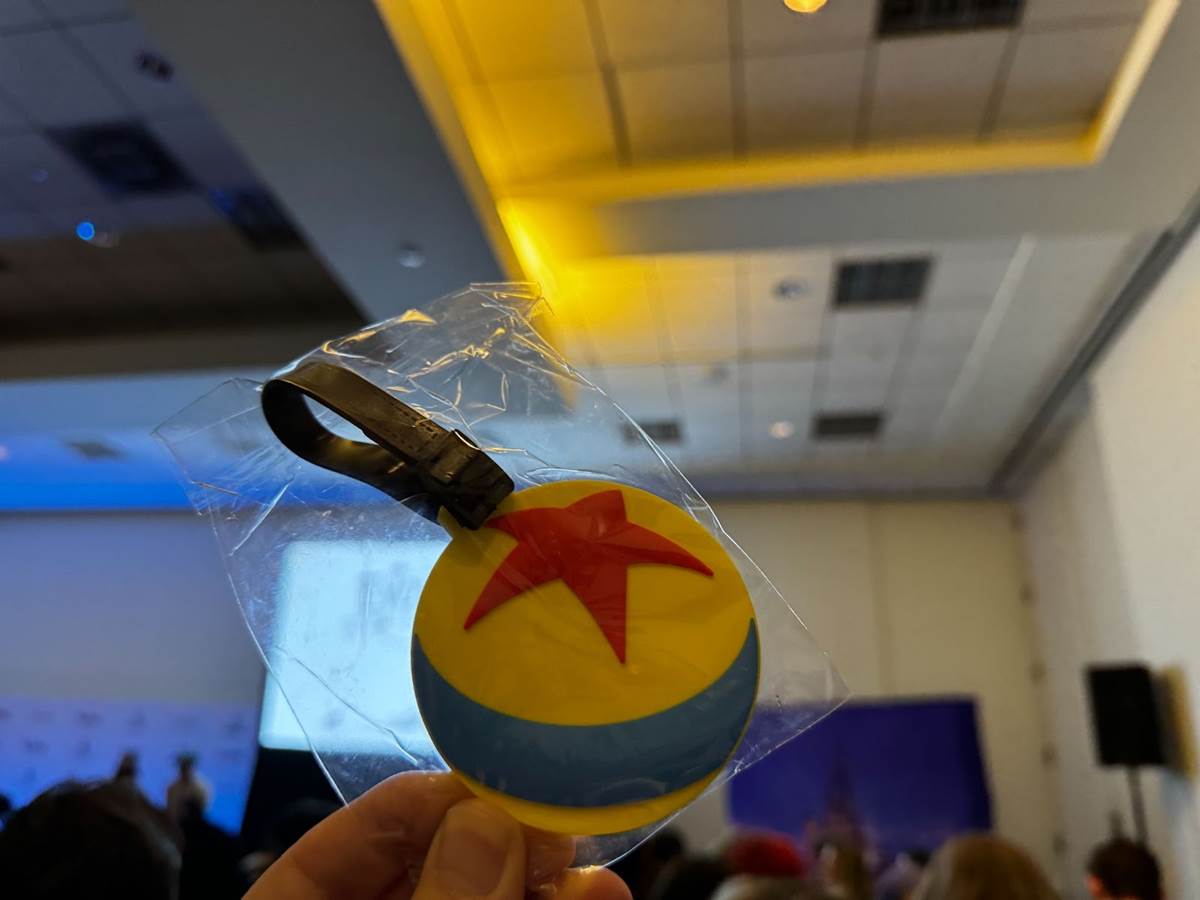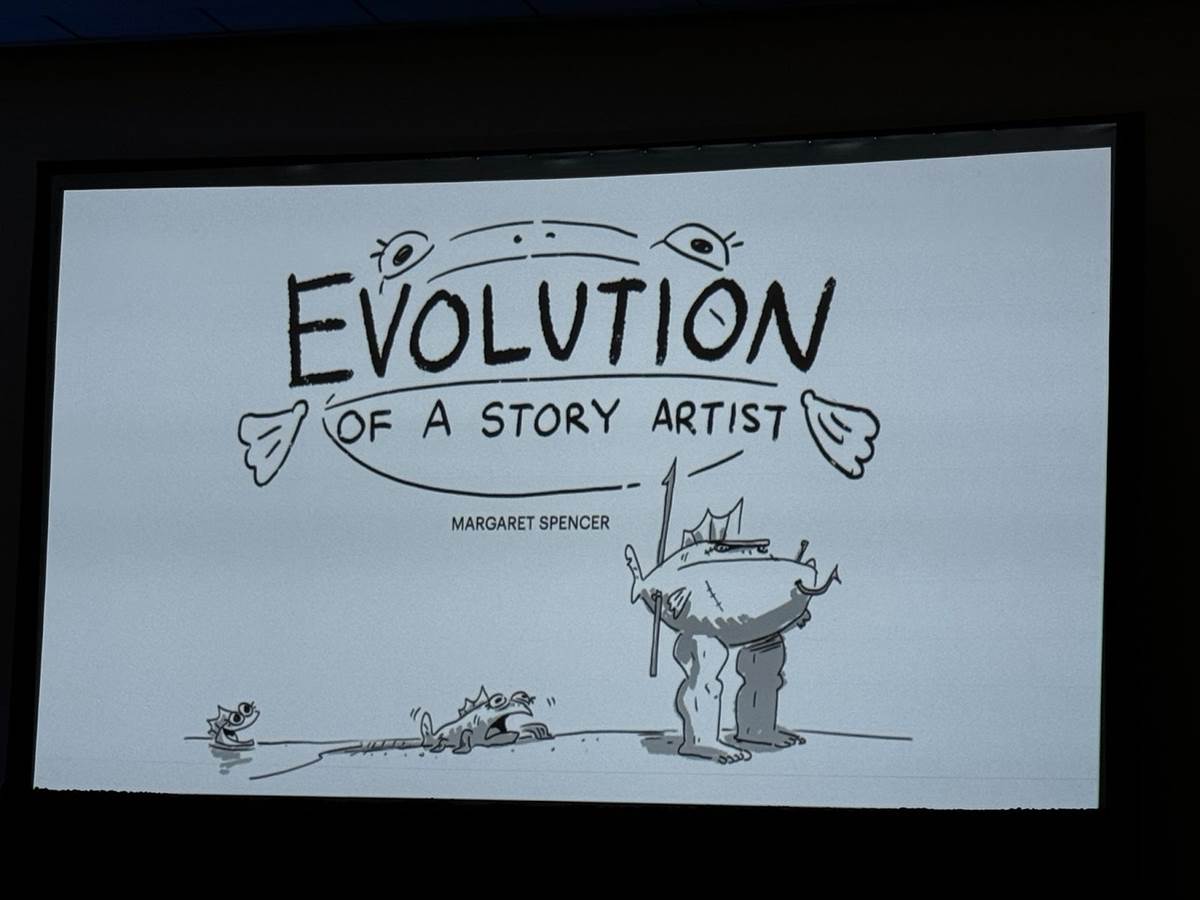LightBox Expo Recap: “Evolution of a Story Artist: Paths to Pixar” with Margaret Spencer and Charles Choo
Lightbox Expo 2023 got off to a strong start with two Story Artists from Pixar Animation Studios in “Evolution of a Story Artist: Paths to Pixar." There used to be a similarly titled series of bonus features on Pixar’s home video releases, but in a live forum with a Q&A, it felt a lot more personal. Margaret Spencer and Charles Choo each presented a storyboard version of how they became a Pixar Story Artist.
For Margaret Spencer, who grew up drawing Disney Princesses and emulating the styles of Gary Larson (The Far Side) and Bill Waterson (Calvin and Hobbes), she knew early on that she wanted to be in the animation industry. But it wasn’t until she attended USC’s animation program within its film school that she learned that her calling was to be a story artist. A semester abroad in Italy further broadened her horizons, adding Italian as a double major. She blended both of her passions through her student film, produced in Italian, which landed her an internship at Pixar Animation Studios (she previously did an internship at Walt Disney Animation Studios, too).
Margaret has been at Pixar for 4 years, with credits on Turning Red and the upcoming original series Win or Lose. For the presentation, she focused on her work for Lightyear. One of her pieces of advice for those hoping to follow in her footsteps is not to be afraid to do work that wasn’t asked for. On Lightyear, she saw the need for a moment in the final act for Buzz to be reminded of the start of this journey. She knew it would be difficult to describe, so she boarded it and pitched it. When you see the touching hologram moment in the film, you can thank Margaret for the idea. For example, late in the production of Lightyear, she saw the need for a moment in the final act when Buzz would be reminded of the person who started the adventure he was on, Alisha Hawthorne. She knew it would be difficult to describe, so she storyboarded her idea and pitched it. is currently the lead story artist on an upcoming Pixar film that hasn’t been announced yet.
As a child, Charles Choo Jr. was a fan of kung-fu movies, comics, video games, and perusing his dad’s muscle and fitness magazines, which informed his artistic style. He loved drawing so much that he often did it in class to the detriment of his grades. As he described it, young Charles was too lazy to create an art portfolio, so he instead went to college to major in education, where his constant doodling also impacted his grades. But a school filmmaking contest led him to switch programs, which got him some friends in the industry. That led to a job offer at Lucasfilm Animation as an editorial technician on Star Wars: The Clone Wars. By the time the series ended, he had risen to assistant editor and, looking for a new job nearby, he ended up at Pixar as an assistant editor on Monsters University, Inside Out, The Good Dinosaur, Cars 3, and Coco.
It was during the production of Coco that other editors convinced Charles, who was still doodling all the time, that he should submit a portfolio to the story department. He finally did, and Story Supervisor Jason Katz gave him a few test assignments to do as homework. This led to the creation of Pixar’s Story Residency Program, with Charles being its first participant, contributing to the story team on Onward and Luca. Most recently, Charles collaborated with Margaret on Lightyear.

Pixar Bag Tag Swag
And there you have it, the story of two aspiring Story Artists and how they ended up at Pixar Animation Studios. There’s no single path that fits for everyone. The animation industry isn’t easy to get into, and it can be challenging to turn it into a lifelong career, but Margaret Spencer and Charles Choo had a lot of advice to share with industry hopefuls during a Q&A session. In Charles’ case, being at Pixar in another role helped him get where he wanted to be, so don’t be afraid to take any job you can get in the industry to start with. And honing your craft is key. Aspiring story artists were encouraged to take a favorite scene of theirs from a movie or TV show and try to rework it as a different genre, such as turning a comedic scene into a drama. For a portfolio, select a piece that shows your skill at film composition, one that captures a specific tone, and one that shows off your personality to help you stand out in a crowd of applicants.
Click here for more coverage from LightBox Expo.


